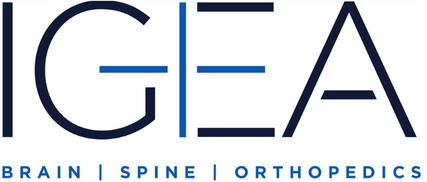EXTRA-CRANIAL TO INTRACRANIAL (EC-IC) BYPASS PROCEDURES IN NEW JERSEY & NEW YORK
Moyamoya disease is a progressive cerebrovascular condition. It begins by constricting arteries at the brain’s base, reducing blood flow and depriving the brain of much-needed oxygen and nutrients. The body responds by creating alternate blood flow through a cluster of tiny vessels. This results in a high risk for strokes, as well as a host of unpleasant symptoms.
Though Moyamoya disease is uncommon, you can seek effective treatment at IGEA Brain, Spine & Orthopedics. With locations in New Jersey and New York, our expert neurosurgeons offer cutting-edge extra-cranial to intracranial (EC-IC) bypass procedures to slow or stop the progression of Moyamoya disease, helping patients avoid long-term effects and restore their quality of life.
SYMPTOMS AND CAUSES OF MOYAMOYA DISEASE
Moyamoya disease is known to cause a series of ischemic or hemorrhagic strokes, as well as mini-strokes, which become progressively more severe and more frequent. It is also associated with the following symptoms:
- Seizures
- Involuntary movements
- Changes in vision, hearing, and temperature sensitivity
- Difficulty speaking or understanding speech
- Weakness, numbness, or paralysis in one side of the body
The exact cause of Moyamoya disease is unknown. Most theories point to an inherited defect most common in families of Asian descent. It may also be associated with certain other conditions, including Down syndrome, sickle cell anemia, and hyperthyroidism.
ABOUT AN EXTRA-CRANIAL TO INTRACRANIAL (EC-IC) BYPASS
Because Moyamoya disease is a progressive condition, immediate medical action is necessary to prevent further decline. This is possible through an extra-cranial to intracranial (EC-IC) bypass to restore blood flow. The procedure follows these steps:
1. Doctors administer general anesthesia. Patients are asleep during surgery.
2. The head is stabilized, shaved, and washed before a minor incision is made. A small window is also cut in the skull to allow access to the brain.
3. Temporary clips are placed across blood vessels to stop blood flow.
4. Using imaging technology, the neurosurgeon carefully grafts an artery alongside the affected blood vessel. The graft may come from elsewhere in the body or a donor.
5. The clips are released.
6. The bone flap is replaced and secured
7. The incision is closed.
An EC-IC bypass takes one day to complete. Patients then spend one to two days under observation in the hospital before discharge. They can gradually return to daily activities under the guidance of their neurosurgeon, with full recovery expected in about four weeks.
PATIENT ELIGIBILITY AND PREPARATION
During your consultation, our neurovascular team at IGEA Brain, Spine & Orthopedics will closely evaluate your condition and overall health to determine whether the procedure will be safe. Patients who are eligible for surgery should then follow these steps to prepare:
- Stop tobacco and alcohol use two weeks in advance.
- Stop anti-inflammatory medicines (e.g., aspirin, ibuprofen) one week in advance.
- Do not eat or drink after midnight before the surgery.
LEARN MORE ABOUT EC-IC BYPASS SURGERY
If you or your loved one is living with Moyamoya disease, IGEA Brain, Spine & Orthopedics is here to help. We serve the tri-state area with advanced diagnosis and treatment for patients with brain, spine, and orthopedic conditions. Contact us to learn more or schedule a consultation at our offices in New Jersey or New York.

